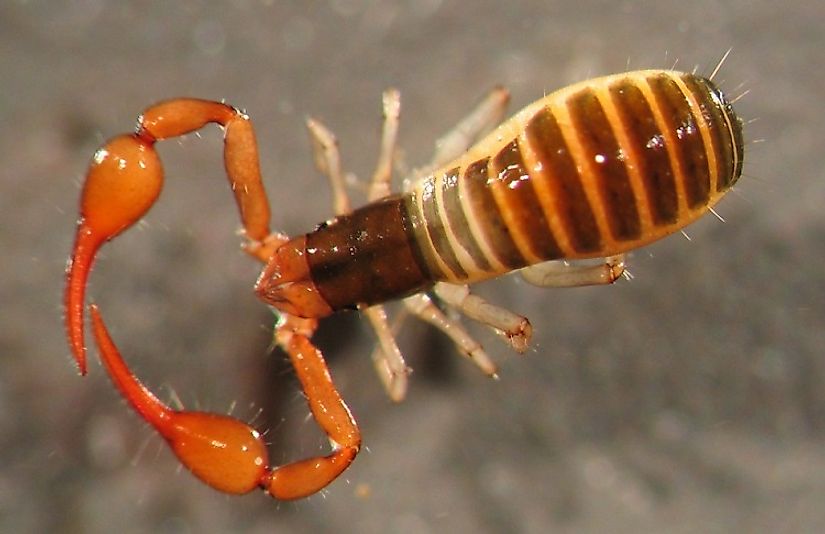Movile Cave - An Oddity Of Romania

5. Description
An alien land within our own human-inhabited planet, the Movile Cave of Romania, discovered in 1986, is surely a treasure to be conserved. Lying below a vast stretch of barren, featureless plain in Constanta Country in Romania, this cave and its inhabitants are unique in every possible way. Here evolution of life has taken place in a manner completely different from the rest of the world since for 5.5 million years, the cave has remained in an isolated state. Though conditions inside the cave is unsuitable for most modern forms of life that we know today, the cave is full of creeping and crawling inhabitants that have adapted to survive in the unique cave habitat.
4. Natural History of Movile
Various theories have been provided to explain the arrival of the inhabitants to the Movile Cave. One theory suggests that the northward movement of the African landmass during the Miocene period that resulted in the cutting off of the Mediterranean from the Atlantic Ocean could have dried out the former, leading to the migration of animals towards underground water reserves like those in the Movile Cave. Being free of predators and with plenty of food and warmth, the cave could have acted like a haven for these newly colonizing species. However, the bacterial species discovered in the cave appear to have been derived from ancestors well before 5.5 million years ago even though these insects are believed to have approached the cave during the Miocene Epoch. There is also a possibility that the insects simply entered the cave by accidental falls and then continued to breed and thrive in its habitat. Another theory suggests that animals arrived in the Movile Cave in various stages of time. This belief stems from the fact that a species of snail living in the cave has been found to inhabit the cave for slightly more than 2 million years. This timeline coincided with the an ice age period and it could be that the snail found the warm environment of the cave as a safe haven for living.
3. Modern Significance
The Movile Cave's inhabitants could answer our many questions on how life formed in primordial Earth and how the first primordial life forms evolved. The conditions of the cave and that of the geothermal vents of the world today appear to represent the conditions of primordial Earth whose atmosphere and oceans were a cocktail of carbon-dioxide, sulphides, methane, and ammonia, a lethal combination of toxic compounds that would kill off most modern forms of life today. However, life forms still survive in the Movile Cave and could give us an idea of life on primordial Earth. Also, since global warming is loading our atmosphere with methane and carbon-dioxide, the discovery of the microbes in the cave that metabolize these compounds for their survival, could provide us a clue to solve the environmental crisis using these bacteria for bioremediation purposes.
2. Unique Habitat and Biodiversity
The environment inside the Movile Cave is completely different from the outside world. While atmospheric air contains 21% oxygen and 0.03% of carbon-dioxide, the cave air contains only 7-10% oxygen and 2 to 3.5% carbon-dioxide! The air also has a 1-2% content of methane. The water and air of the Movile Cave is also rich in ammonia and sulphides. Though the above air and water conditions would repel life in the outside world, around 48 species, including 33 endemic ones have been discovered in the cave. The food chain here behaves in a unique manner with bacteria utilizing chemosynthesis to oxidize sulphur and methane, producing nutrients for other microbes which then multiply rapidly to form a microbial mat over the walls of the cave and floor of the water bodies. Small insects and other invertebrates feed on these microbial mats and are in turn the prey of the larger predators. Spiders, scorpions, snails, insects, and leeches are some of the larger species inhabiting the Movile Cave.
1. Environmental Threats and Dangers
Though the Movile Cave and its unique species have survived for so many years, the ever growing human settlements threaten to disturb its delicate balance in the near future. It is quite possible that the leakage from septic tanks and sewage lines of nearby urban centers could change the water composition of the cave and harm its species. The entry of humans into the cave for exploration also poses a threat to the unique habitat. Although the explorations of the cave are strictly regulated and the explorers wear sterilized gear and footwear, the breath of these explorers release some amount of oxygen and microbes into the air of the cave which could again harm the delicate balance of the fragile ecosystem. It is extremely important that we conserve this habitat as it is a treasure that might help us solve many mysteries about our planet and the possibility of alien life on other planets.











